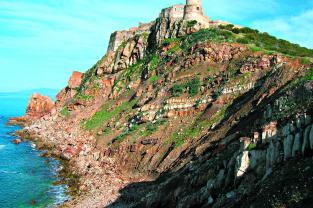TERRASOL intervened in 2007 to carry out the diagnosis, design and detailed design of the rock mass reinforcement supporting the “Genoese fort” of Tabarka in Tunisia, which was built in the 16th century.
The analysis of the structure of the rock mass as well as of the internal stability conditions of the old masonry structure has allowed an accurate diagnosis of multiple origins of the disaster affecting the structure. It has been shown, on the south side, a sliding mechanism “bench on bench” of the bedrock, composed of alternating sandstone and marl levels. This mechanism induces instability at the bottom of the foundations as well as cracks at the base of the fortifications.
In addition, an internal undersizing of the retaining structure is responsible for the appearance of cracks in the upper part of the fort. By taking into account the multiple origins of the disaster as well as the complex conditions of access to the site, it was proposed and designed the following reinforcement solution: passive anchors and nails to reinforce the building masonry, micropiles to reinforce the foundations, and nailing of the stratified rock mass downstream of the fort.
During this expertise on southern part of the fort, it was also highlighted in the North part a second area where the Tabarka fort presents a high geotechnical risk, which is related to the regressive erosion at the base of the cliffs exposed to the sea. Diagnosis as well as detailed design have therefore been extended to this part of the structure.
Terrasol’s achievements:
- Diagnosis using acrobatic works
- Study of reinforcement solutions for the cliff
- Detailed design of the reinforcement solutions
 Agent Access
Agent Access 




